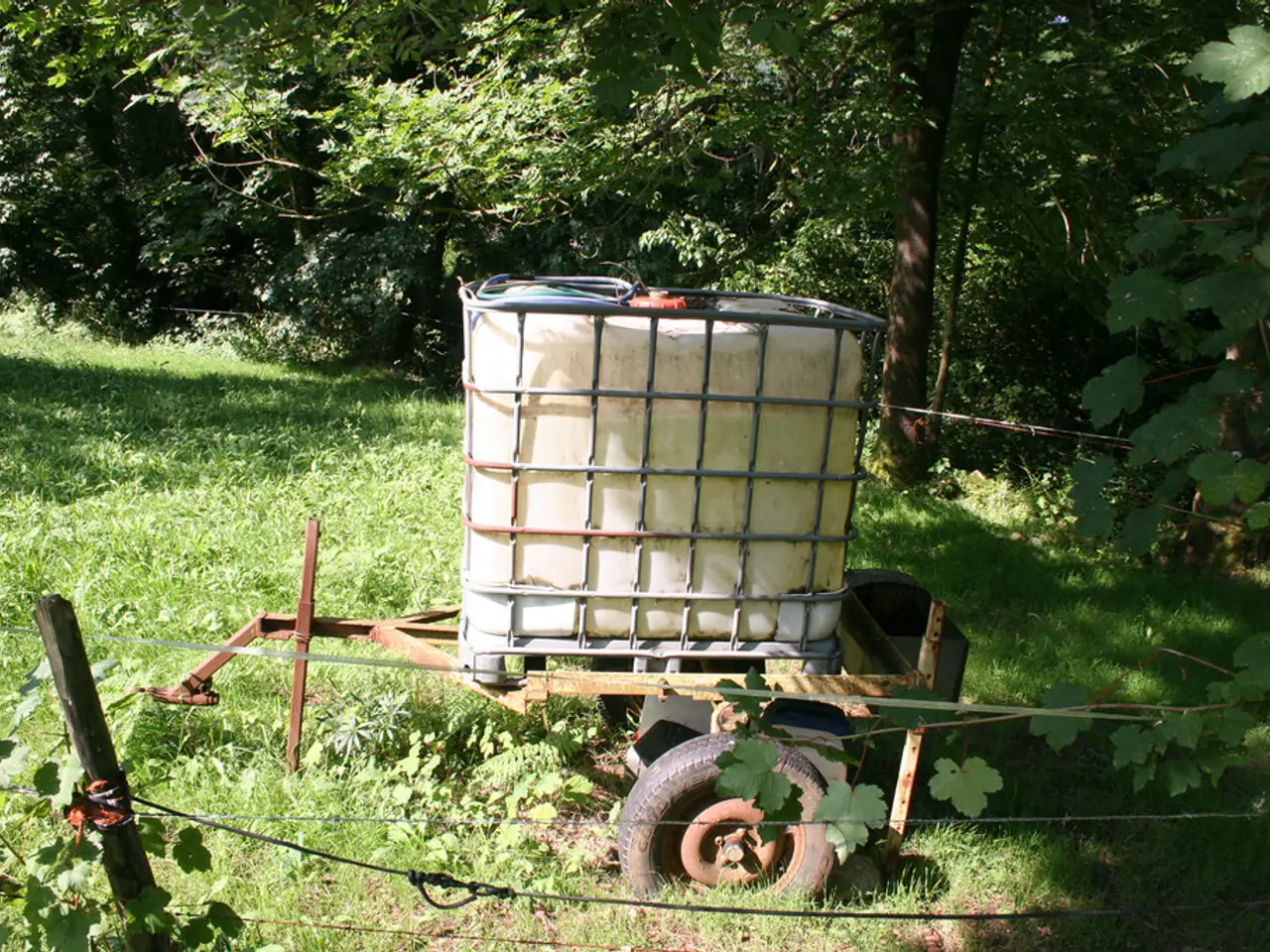Solar energy conversion into natural gas
Producing Methane from Biogas to Store Excess Electricity as Natural Gas
A groundbreaking project is underway at the Schwandorf-Wackersdorf wastewater treatment plant in Germany, where scientists from the Ostbayerische Technische Hochschule (OTH) Regensburg and researchers from Viessmann's subsidiary MicrobEnergy are collaborating to produce methane from biogas. This initiative aims to store excess electricity as natural gas, providing a valuable solution for the storage of excess electrical energy during the energy transition.
The project involves splitting excess electricity into oxygen and hydrogen through electrolysis. The hydrogen, along with carbon dioxide from biogas, is directed into an anaerobic digester or an external reactor, where special microorganisms in the sludge produce methane from the hydrogen and carbon dioxide present in the biogas. The resulting synthetic methane acts as a natural gas equivalent, which can be stored or used flexibly, providing a means to store excess electricity that would otherwise be wasted.
This approach leverages existing biogas infrastructure at the wastewater treatment plant and integrates renewable electricity storage by chemically recycling CO2 into methane—thus creating a renewable, storable fuel and enabling grid stabilization.
The gas produced in the wastewater treatment plant could be fed into the natural gas network and stored there. When wind is strong and the sun is shining, power grids can struggle with excess energy and may need to shut down wind turbines or power plants. By storing this excess energy as methane, the grid can better manage these surpluses, ensuring a more stable and efficient energy supply.
Politics still has a role to play in the profitability and implementation of the power-to-gas project. Currently, the "excess" electricity and the revenues from the fed-in gas play a significant part in the profitability calculation of the power-to-gas project. The exact details of these calculations are not yet clear, but it is expected that political support and policies will be crucial in making the project economically viable.
The team at the Schwandorf-Wackersdorf wastewater treatment plant, led by Marion Steffl and Robert Merkl, is open to innovations in energy generation. Feller and Falter have expressed their impressions of the research work and pledged further support for the project. A reactor currently running at the wastewater treatment plant will soon be moved to the Viessmann site in Allersberg for the development of a larger plant based on the findings.
With vast storage capacities and the need for affordable and efficient energy storage solutions, the power-to-gas project is an important step towards a more sustainable and efficient energy system. By converting surplus renewable electricity into methane, excess energy can be stored and used when needed, reducing waste and providing a reliable energy supply.
[1] Power-to-Gas: The Future of Energy Storage
[2] Power-to-Gas: A Comprehensive Guide
- The renewable-energy industry is embracing the power-to-gas approach as a promising method for harnessing the excess electricity produced by renewable sources, and transforming it into storable synthetic methane, thereby providing a viable solution for the finance sector to invest in energy storage technology.
- The other significant benefit of the power-to-gas project is its potential to bolster the stability of the energy grid by storing excess renewable energy as natural gas and releasing it when the demand is high, thus contributing to a more efficient energy system.
- As the technology matures and the industry garners further support, especially from politics, expectations are high that power-to-gas could revolutionize the renewable-energy industry by offering a scalable and cost-effective solution for energy storage.




